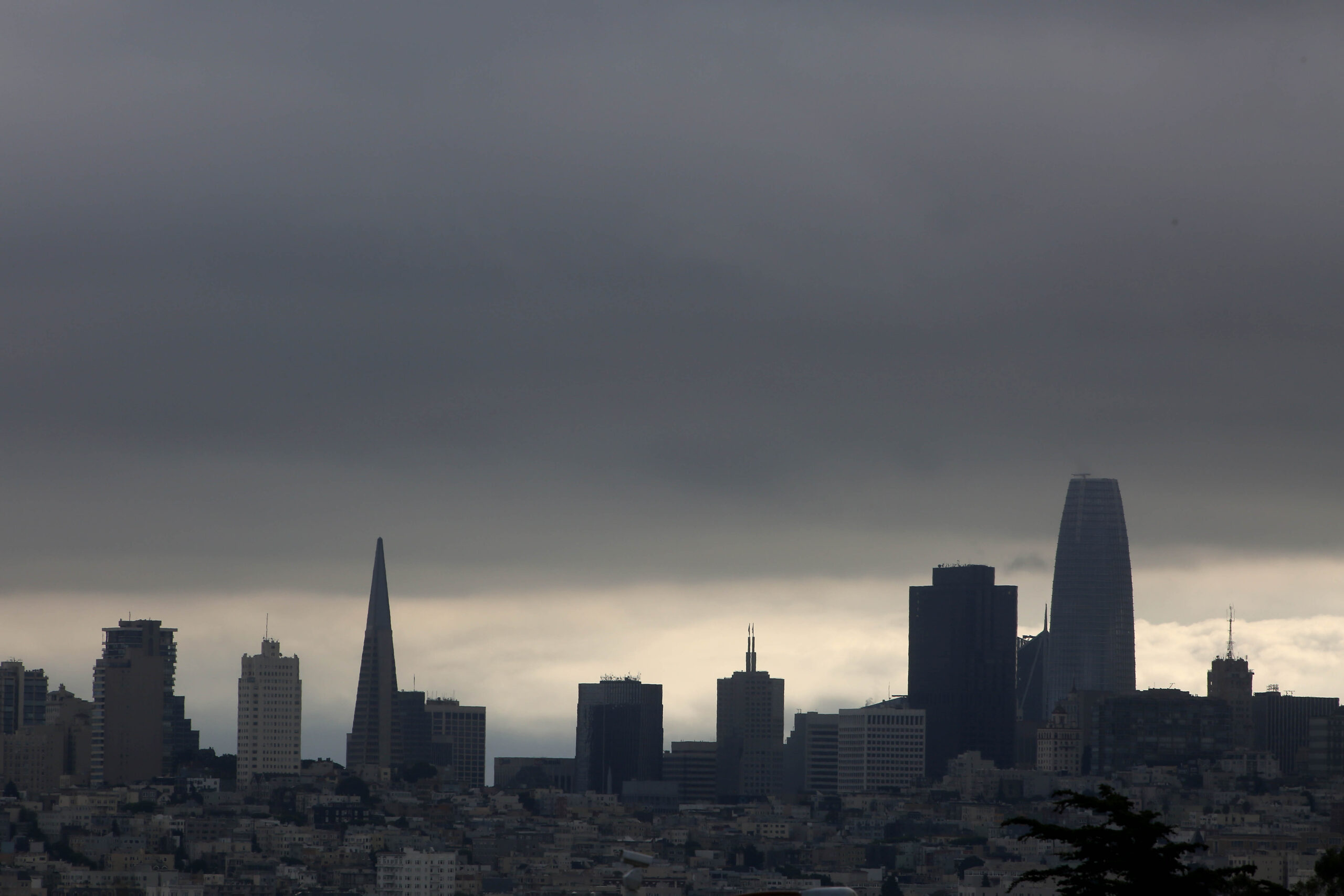Mayor London Breed’s road map for San Francisco’s Downtown is accompanied by an acknowledgment that the fat, happy era is over.
Before the pandemic, the city’s central business district was responsible for nearly 70% of jobs in the city and much of the city’s tax base. But then remote work smashed headlong into that status quo, leaving an office vacancy crisis, a drop in public transit ridership and a decline in foot traffic that has weakened the city’s traditional economic engine.
WATCH: “San Francisco downtown as we know it is not coming back.”
— The San Francisco Standard (@sfstandard) February 9, 2023
SF Mayor @LondonBreed addressed the city’s downtown core—which has struggled with the adjustment to remote work—in her State of the City address this afternoon. (1/2) pic.twitter.com/o0Wmt5ygT8
“San Francisco’s Downtown as we know it is not coming back. And you know what, that’s OK,” said Breed at her annual state of the city speech Thursday. “The truth is, it won’t be any one thing that ‘saves Downtown.’ It will have to be many things.”
Breed’s solutions include cutting red tape for small businesses that move into Downtown, marketing the city to new industries, a three-year tax break for new businesses, a tax freeze for retail, hotels and other sectors, rezoning for arts and entertainment—and an overhaul of the city’s tax codes, which would require a successful ballot measure.
Breed’s appeal to new business sectors was exemplified by the setting: Pier 70, home to Astranis, a satellite technology company.
“Millions of people can benefit from what is being designed and built right here,” Breed said, touting the city's density of tech talent and emerging industries like artificial intelligence.
Proud to host the State of the City address today here at @Astranis
— John Gedmark (@Gedmark) February 9, 2023
“A satellite tech company is here building the future” -Mayor @LondonBreed pic.twitter.com/8pOrHAnH9H
The stakes are unusually high: The city is facing a $728 million, two-year budget deficit that could grow if conditions worsen further. That gap is likely to set off serious funding fights in the coming months.
Officials say that while some of the mayor’s Downtown initiatives are funded, some will require additional budget approvals or support from the state and federal governments. Most tax and zoning changes need to be passed by the Board of Supervisors or by voters.
Many aspects of the strategy continue programs like business grants, outdoor dining and public art displays. But some are still being analyzed.
For example, a report on converting underused offices into housing is expected to detail findings in March. Officials will need to wait until April for a preliminary economic analysis on what industries the city might best be able to attract, with full results not ready until June.
Improving public safety and cleanliness Downtown is among the mayor’s top economic priorities, and she pledged to introduce a $25 million budget supplemental to boost overtime funding for the police department.
The mayor is also doubling down on an “uncomfortable” housing plan that would require rezoning of the city’s west side and the elimination of most forms of discretionary review to meet the city’s 82,000-unit goal.
But many details of the mayor’s strategy are still in the works. A plan to designate a Downtown arts, culture and entertainment zone has not decided on a location. Investing in transportation connections is limited by the growing fiscal crises faced by BART and Muni.
Perhaps the biggest swing for the city are tax incentives and reform to attract and retain more businesses.
The city will pause Prop. F’s annual business tax increases for retail, hospitality, manufacturing, and arts and entertainment businesses. New businesses coming to the city will also receive a three-year discount on their gross receipts business tax up to $1 million.
San Francisco’s business tax structure, which shifted in recent years from one based on payroll expenses to gross receipts, had unintended impacts as local companies embraced remote work.
Namely, the reliance on gross receipts disincentivizes companies from having employees work from the city. That's because SF calculates taxes, in part, based on the proportion of employees who physically work in the city.
“We have to stop the endless cycle of one-off tax measures thrown on the ballot without any real thought or analysis,” Breed said. “We see the impacts when businesses pack up and leave because of it.”
The Controller’s Office is starting to explore how to potentially restructure and reform the tax code and expects to present a report in April. The Mayor’s Office is gearing up to bring a ballot measure in front of voters next year.
“If you can tax it under San Francisco law, the chances are the voters have approved a tax on it,” said City Controller Ben Rosenfield at a meeting this week. “We’re largely talking about turning the dials on taxes we already have.”
